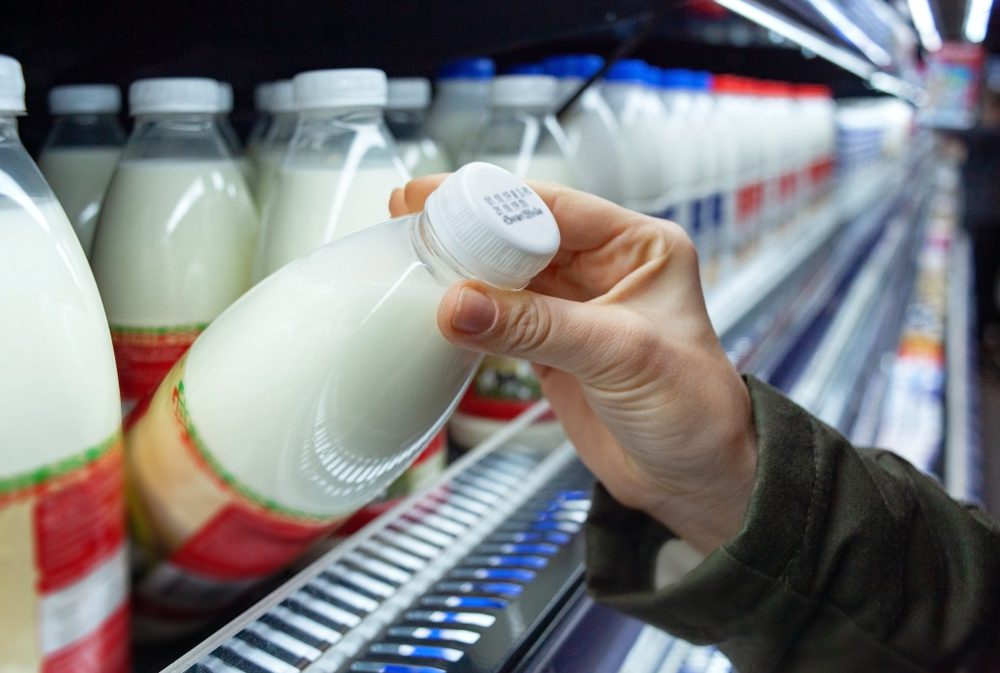We can all agree that it’s incredibly frustrating when uneaten food has gone bad before you’ve even had a chance to eat it. And that’s why we couldn’t be happier to learn new ways to avoid waste. If you want to read some of the best money-saving tips, you are in the right place.
First, you need to get rid of a terrible habit that I’m 100% sure most households have: when vegetables turn a bit limp or discolored, they instantly toss them in the trash. Also, you’ll have to learn how to read best-by labels and sell-by dates. I hope you’re ready, because what you’ll read will simply change your entire perspective!

How to read expiration dates
As a general rule, you have to make a distinction between “best-by” and expiration dates. I know it might get a bit confusing, but the main idea is that these dates refer to food quality, not food safety. So here’s what you need to know, explained in a few words:
When you see a “sell-by” date, that date is meant to tell the store how long to keep the product for sale. Also, the “best if used by” date refers to optimum flavor and quality, while the “use-by” date shows when the product isn’t at its best, according to the manufacturer. But if you want to throw away food that has gone bad, you have to check for mold or an off-smell.
Which foods need to be refrigerated?
You might hear a lot of conflicting opinions when it comes to foods that need to be refrigerated and which to leave out at room temperature. Foods that don’t do very well in the fridge might be whole tomatoes, watermelons, potatoes, onions, coffee, garlic, bread, and honey.
Also, foods that should be kept 100% in the refrigerator are grapes, jams, nut butter, tortillas, cooked foods, sprouts, apples, berries, celery, and leafy greens. Of course, this also depends on how fast you consume these products. For instance, if a pack of tortillas only lasts a couple of hours in your kitchen, you shouldn’t bother refrigerating it.
Store some products in glass containers
Even if plastic containers might seem a bit more convenient, glass that has a tight-fitting lid might help make sliced fruits, veggies, and leftovers last a bit longer. Do you know what else is absolutely great about glass containers?
They retain fewer stains (that’s my absolute go-to when it comes to containers) and unwanted odors, but you can also instantly toss them right in the microwave. Now, I know that glass containers are the most expensive type of container, but I can’t move on to the next point without showing you my favorite set of glass containers. You should give it a try!
Freeze those tasty leftovers in resealable bags
Let’s be honest: leftovers shouldn’t go to waste, but you also don’t feel like eating the same thing you did two days in a row, so what’s there to do? Well, take your cooked chili, veggie lasagna, or even tofu curry and stuff them in resealable freezer bags.
Good news: you can reheat food in the bag itself, but for no longer than 30 seconds, or else you might risk melting that plastic. I personally use resealable bags for everything: fruits, vegetables, meat, stews, smoothie mix, and even sauces.
There’s nothing I wouldn’t throw in a resealable bag and back into the freezer. Now, there’s one more thing that I do, and you might want to try it: every time I open one of those bags, I wash it and use it one more time. After a maximum of four uses, I throw it away (but it’s still more eco-friendly!).

Buy frozen fruits and veggies
If you can’t make it to the supermarket on a weekly basis, then frozen fruits and veggies should be your go-to! They’re a wonderful alternative to fresh produce. They have almost the same nutritional profile, and you might even find some packages that contain pre-chopped frozen fruits and veggies, which will automatically save you more time and energy.
They are also super easy to reheat, they never spoil (unless you refrigerate them multiple times), and they won’t cost you more per bag. Now, you have to think about your meals, too. For instance, if you like your smoothie in the morning, you could get more fruits than veggies.
Make more smoothies
And speaking of smoothies, you know what else is great? If you know that the spinach and the last banana in your fridge are getting closer to their expiration dates, simply toss them into the blender, along with other tasty ingredients, and you’ll get a nutritious, healthy smoothie.
Make sure you find the balance between sweet fruits and healthy greens, and if you have it at your reach, add a spoonful of nut butter just to round up the flavor a little bit. If you have too many fruits and veggies that are about to go bad, you could put them in some freezer bags and toss them in the refrigerator for future smoothies.
When you’re in doubt, cook a stew
Also, the same rule you’d apply for smoothies can do wonders for veggies. If you open your fridge and you see you’ve got a bunch of carrots, celery, onions, and any other delicious veggies that are about to go bad, it’s time to cook a delicious, warming stew.

Wrap the bread to prevent it from going stale
If you’d ask me, someone popped this question for the first time ever maybe 6 days after the bread was invented. So, it’s an age-old question. As far as we’re concerned, you shouldn’t keep your bread in the refrigerator, as the cool temperatures make it go stale faster.
The best option is to wrap your bread in a fresh dish towel or even a paper bag and store it in a dry place (preferably your pantry). Then, you can take it out whenever you need it. But speaking of bread, the best option is to get yourself one of those bread makers that are simply magical. Trust me, the bread is SO tasty, you won’t ever worry it might get stale!
Check if your refrigerator is at the right temperature
Your refrigerator should be at 40 degrees Fahrenheit or even lower, but if there’s anything above that, it might allow bacteria to grow, and that’s not something you’d want to happen. However, if you don’t know your refrigerator’s temperature, then you might have to get yourself one of those appliance thermometers, but don’t worry! They’re super affordable, and you’ll be at peace knowing exactly what’s happening with your refrigerator!
Storage tips to keep your herbs as fresh as possible
What about herbs? For those of you who love cooking with fresh herbs, as I do, then it must be really troublesome figuring out what to do with them when they’re no longer…fresh. Well, you need to work on your storage technique.
Take your tender herbs like parsley, basil, and thyme, clip their ends, and refrigerate them in a glass container with a little bit of water, in the same way you would a vase of flowers. Also, another great idea would be to blend your fresh herbs with some olive oil and freeze them.
Are you excited to try out these tips? First, we’re also curious to know how it goes, so make sure you come back to share your experience. And while you’re here, I wanted to recommend you this article, too: 10 Worst Grocery Stores in America








